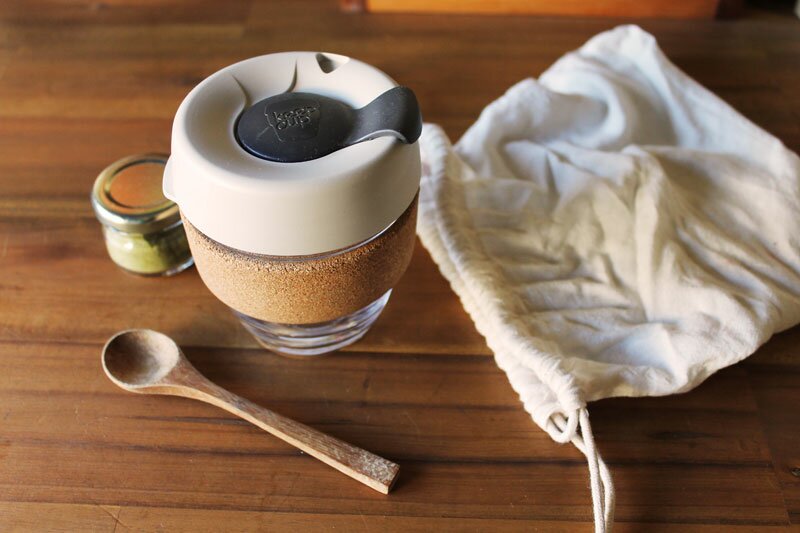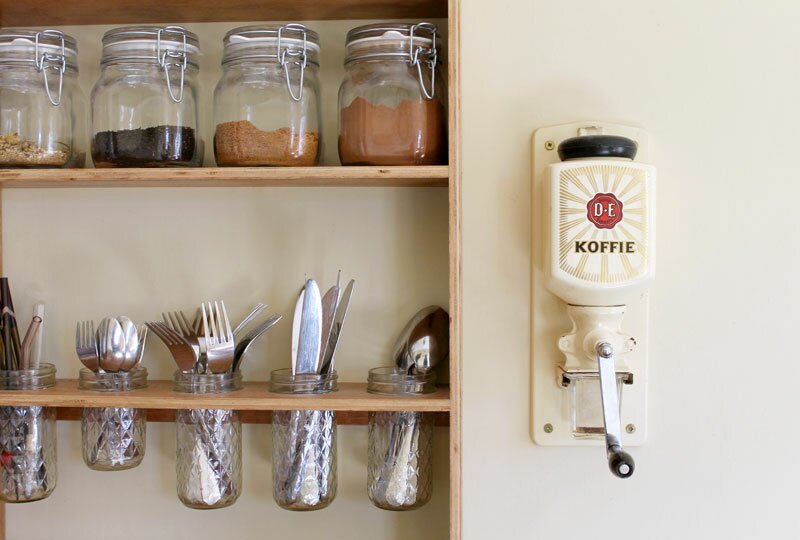My family and I have been consciously avoiding plastic for about two years now. This is no mean feat, as plastic is about as ubiquitous as water these days, and I am well aware that in spite of our best efforts we are still surrounded by it in our home – our plastic fridge, our plastic heat pump, and of course, my plastic computer! And yet, we persist, despite the seeming impossibility of it all. I guess that’s because we’re not solely motivated by ideas of saving our oceans, or reducing landfill waste, reducing our dependency on oil, or limiting our exposure to xeno-oestrogens (and yet these are all serious issues as far as I’m concerned!). One of the things that concerns me the most about plastic is that we most often use it in the form of disposable products. It’s quite ironic really, considering that the average plastic bottle will take over 450 years to degrade (we think – plastic has only been around for about 100 years so it’s hard to know for sure…). This way of using plastic has pretty unsustainable environmental implications, but I also believe it is really detrimental to us, as people. As a mother of two little ones under 5, I can see that we are training ourselves from the youngest age to see our tools and toys as disposable, unfixable, easily replaceable objects. This encourages a ‘disposable attitude’ to life in general, and it impacts on the way we treat others and the way we see ourselves – as disposable, unfixable, and easily replaceable. A change in attitude has to come from a change in behaviour, and this is the main reason why I target disposable plastic first whenever I choose to say, “No thanks.”
So now I’ve explained why, perhaps you are interested in how? Here are 9 ways my family and I are trying to reduce our plastic footprint:
1. We make most of our food from scratch (as in, from raw ingredients) and we grow as much as we can on our little urban section. Growing our own veg means we can pick the spinach leaves and put them straight into our dinner without needing to transport or store them in plastic!
2. We buy most of our dry foods from our local Bin Inn, and we take our own paper bags or glass jars with us when we shop. When it’s time to stock up on peanut butter I just take my glass jar up to the counter and they weigh it before I fill it with freshly ground peanut butter from the grinder. At the weekly Farmers’ Markets we choose produce packed in paper bags or we use our own cloth bags. I always take reusable bags with me to the supermarket.
3. We’ve emptied our kitchen of almost all plastic! We store our food in glass containers. Some of them have plastic lids for a good seal, but clip-lock glass preserving jars are my favourite vessel for storing pantry goods, and those are completely plastic-free. We use stainless steel lunchboxes and stainless steel or glass water bottles.
4. I make a lot of our toiletries from raw ingredients, which means there is very little plastic in our bathroom these days. I make our deodorant, shampoo and conditioning rinse, mouthwash, and we brush our teeth with olive oil soap instead of toothpaste! We use bamboo toothbrushes and wooden hairbrushes and combs too.
5. I’ve emptied our laundry of plastic too, since we stopped buying commercial cleaning products. We keep our whole house clean using any one of: white vinegar, baking soda, dishwashing liquid, homemade laundry powder, and sodium percarbonate (oxygen bleach), all of which we can buy in bulk. I made some washable cloth bin liners which work great in the bathroom and kitchen. I also sewed up some washable cloths to use instead of synthetic sponges for wiping down surfaces in the kitchen and laundry.
6. We only buy plastic-free fabrics. Synthetic fabrics are a huge problem for our environment. Whenever you wash your favourite polar-fleece vest or acrylic jumper tiny plastic fibres are released from the fabric. These are washed down the drain and up to 40% of them enter our waterways where they begin their journey up the food chain. It is getting more and more difficult to find clothes made from 100% natural fibres these days, and that won’t change unless we consumers vote with our wallets.
7. We actively look for second-hand clothes and furnishings. Even better than buying brand-new plastic-free clothes is to buy clothes that are already in existence and are in perfectly good condition, and giving them a second life.
8. I’ve organised my handbag so I always have: a reusable glass coffee cup, a tiny reusable bag, and a handkerchief on hand for those times when I’m feeling spontaneous! My handbag is a decent size too, so there have been plenty of times when I’ve declined a plastic bag and said, “I’ll just put it straight in my handbag, thanks.” Retailers don’t seem to mind at all, so long as I keep a copy of my receipt.
9. We sort, clean if necessary, and collect our soft plastics. We take them to the supermarket or to the Warehouse where they have soft plastics collection bins. The plastic is recycled into park bench seats and bollards. (See http://www.recycling.kiwi.nz/soft-plastics for more information about this recycling initiative.) I do believe that recycling is a last resort, after refusing, reducing, reusing, and rotting! – but sometimes you just can’t get around soft plastics, particularly in the form of packaging 


Great post. How do you buy things like socks and leggings without plastic to make them stretchy?
Hey, GREAT question! And all I can say is I try, but I don’t think it’s possible right now . I thought I would just knit all my own socks and never buy socks again, but I soon realised I just don’t have the time, and the other thing I learned is that if you want a sock that’s thin enough to wear inside shoes it will wear out SO quickly unless you reinforce it with nylon in the heel. Aside from leggings and socks though, what’s really frustrating is how elastane is becoming ubiquitous in ALL clothes. Recently I went shopping to look for some ethical jeans here in Hamilton. Aside from there being no organic jeans available, pretty much every single pair had elastane in them for stretch. These days, Tshirts, sweaters, pants – everything’s stretchy (and often blended with polyester). I ended up buying second-hand jeans so I feel ok about my purchase even though they have stretch too, and in general I just concentrate on buying clothes with natural fibres where the only plastic is a small percentage of elastane. Basically, I consciously shop with the goal of buying AS LITTLE PLASTIC in my clothes as is humanly possible, and accept what I can’t change …yet (like how I still need a plastic fridge). When I can’t find anything without plastic, I go to the second hand clothes shop and see if I can find something better there. Usually I can!
Ive never thought of washale bin liners before. Great idea. Are they calico?
I cut up an old cotton bed sheet and overlocked it into a liner bag with curved corners on the bottom and a drawstring on the top. I made two for each bin so I can wash one while the other’s in use. They work really well!